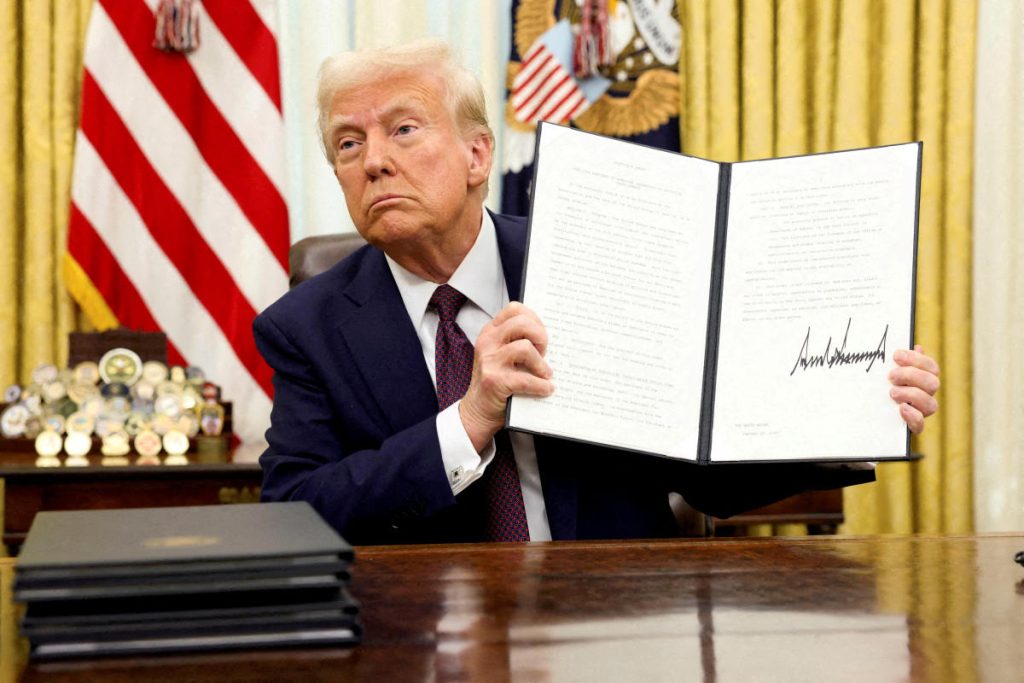
Trump followed through with his plans on Saturday, placing tariffs on Canada, Mexico and China, which will be fully in force by Tuesday, Feb. 4. There will be 25% duties on Canada and Mexico, and 10% on China, over issues of fentanyl and illegal migration.
Markets are digesting the tariff announcements after a strong start to the year. In January, the S&P 500 (^GSPC) rose 2.7% while the Nasdaq Composite (^IXIC) advanced more than 1.6%. The Dow Jones Industrial Average (^DJI) led the gains, rising 4.7%.
In the week ahead, investors will parse the latest developments in Trump’s tariff strategy, the January jobs report, and an onslaught of corporate reports. Updates on job openings, as well as activity in the services and manufacturing sectors, will also be on the schedule.
Meanwhile, quarterly results from Amazon (AMZN), Alphabet (GOOGL,GOOG), Chipotle (CMG), and Eli Lilly (LLY) headline a week that will feature earnings reports from 131 S&P 500 companies.
Tariff reaction will be at the forefront of the market narrative in the week ahead. The duties on all three countries will be fully in force by Tuesday, Feb. 4, according to the order signed by Trump on Saturday afternoon in Florida. Many economists have argued that tariffs could stoke inflation.
As Yahoo Finance’s Ben Werschkul reported, Canada and Mexico were quick to announce retaliatory measures across a range of US goods. Prime Minister Justin Trudeau said that Canada will place 25% counter-tariffs on CAD $155 billion (USD $107 billion) worth of American-made products, starting Tuesday.
Stocks are on track for steep losses to start the week, after their rally cooled off on Friday as White House press secretary Karoline Leavitt outlined the plans for imposing tariffs.
Trump following through with the extent of tariffs he had initially threatened “may be further” than market participants had been expecting, Evercore ISI chief strategist for international affairs and public policy Sarah Bianci told Yahoo Finance.
The Federal Reserve held interest rates steady on Wednesday as it waits for further clarity on inflation’s path toward its 2% target and how potential tariffs could impact that process.
The week ahead will bring several key updates for the Fed on the employment side of its mandate. The January jobs report, due out Friday morning, is expected to show the US labor market added 150,000 jobs in the month, down from the 256,000 seen in December. Meanwhile, the unemployment rate is expected to hold steady at 4.1%. The report will also include revisions to labor data from the past year.



